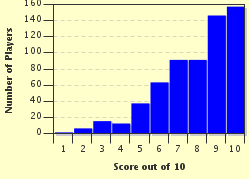Quiz Answer Key and Fun Facts
1. The northernmost of the main islands of Japan is Hokkaido. This island is also a region with the capital city Sapporo. Which river is quite nearby?
2. We go to the north of the island Honshu. Fukushima, the site of the nuclear disaster in 2012, is situated on the Abukuma River. Which of the following lakes is less than 80 km (50 miles) from Fukushima?
3. Let's stay in Honshu for a while. Just south of Tokyo is a Japanese prefecture with the regional capital city Yokohama. What is the name of this prefecture, a name you will perhaps recognise as the location that inspired Katsushige Hokusai to depict a great wave?
4. The Shinano River, the longest river in Japan, flows through the Niigata Prefecture in the west of the island Honshu. Into which sea does the Shinano River mouth?
5. Still in the island Honshu, we find the city of Osaka, which is served by the international airport Kansai. What is special about this airport?
6. We continue our travel through the prefectures on the island Honshu, and reach Hiroshima. I chose a very peaceful destination in this prefecture: the Itsukushima Shrine on the small island Miyajima. What is the most typical feature of this world famous shrine?
7. The last prefecture on Honshu I'll visit in this quiz is Yamaguchi. One of the most interesting places in this prefecture is the Kintai Bridge over the river Nishiki, near the town of Iwakumi. This specific location attracts myriads of Japanese in the month of April, in order to participate in the practice of hanami. What kind of festive activity is hanami?
8. The island Shikoku has only four prefectures. The one we'll visit here is the prefecture of Tokushima, and more specifically the shore near Naruto city. Which natural phenomenon can be observed over here several times a day?
9. Japan consists of four main islands, of which Kyushu is the one that lies the most to the southwest. Which prefecture on Kyushu lies on Tsushima Strait, which separates Japan from South Korea?
10. The four main islands of Japan are Hokkaido, Honshu, Shikoku and Kyushu. There is only one Japanese prefecture, which is not situated on one of these four main islands. Which prefecture is based in the Ryukyu island chain?
Source: Author
JanIQ
This quiz was reviewed by FunTrivia editor
Pagiedamon before going online.
Any errors found in FunTrivia content are routinely corrected through our feedback system.
